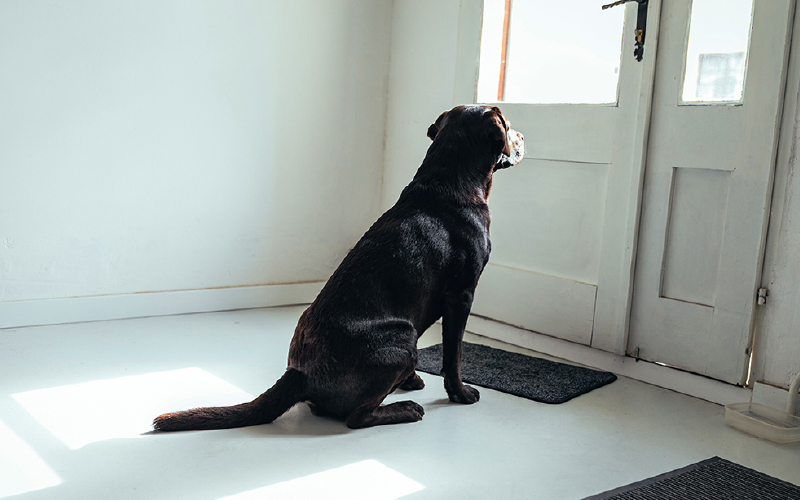How to Handle Your Dog's Separation Anxiety
Are “goodbyes” hard for your dog? The sad puppy eyes your dog makes when you leave the house for work are his way of telling you he doesn’t want you to leave! While most dogs can handle being alone OK (although they don’t like it), some pets experience separation anxiety.
Pet parents of an anxious dog may find that their dog becomes destructive or disruptive when the family leaves, and it’s important to learn how to recognize signs of stress and how to address them.
What is Separation Anxiety?
Separation anxiety in dogs is a condition where the dog shows signs of stress or discomfort when handlers they’re attached to leave them. In most cases, it occurs moments after their attached person leaves, and it’s characterized by a variety of symptoms that can manifest in harmful behaviors.
Several possible causes can trigger separation anxiety in a dog. Sometimes, the problem begins the moment a dog is alone for the first time, or when it is left alone after a longer period of time than normal. In other cases, however, separation anxiety is triggered by traumatic events, changes in family structure, or even by the behavior of the owner.
Symptoms of Separation Anxiety
Depending on the dog, symptoms of separation anxiety can manifest in different ways. Some dogs are more prone to destructive behavior, other dogs are more vocal when conveying their distress. No matter the symptoms, the situation is unpleasant for both the owner and the dog.
Vocal Expressions
Some dogs howl, bark, or whine when separated from their handler. This behavior is characterized as a symptom of separation anxiety when it is persistent in the absence of the guardian, and when it typically only occurs during the handler’s absence.
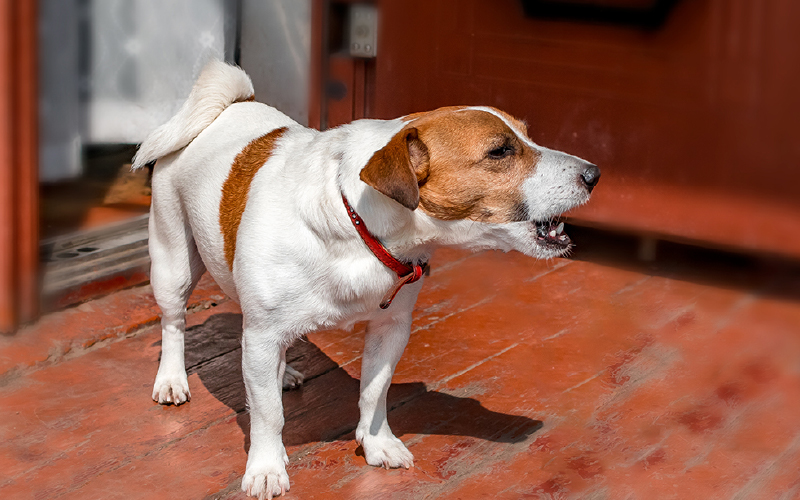
Destructive Behavior
One of the most common and noticeable symptoms of separation anxiety in dogs is destructive behavior.
Some dogs will chew on door frames, windowsills, furniture or other objects within their reach. If they’re closed in a room that separates them from their handler, they may dig at the base of doors with their nails, causing damage to the door and possible injury to themselves.
While the aftermath of destructive behavior can be especially difficult for owners, this symptom is also hazardous to the dog. Chewing on wooden furniture may cause splinters, and digging at the floor or doors can damage the paws.
Typically, this behavior does not persist when the handler is present.
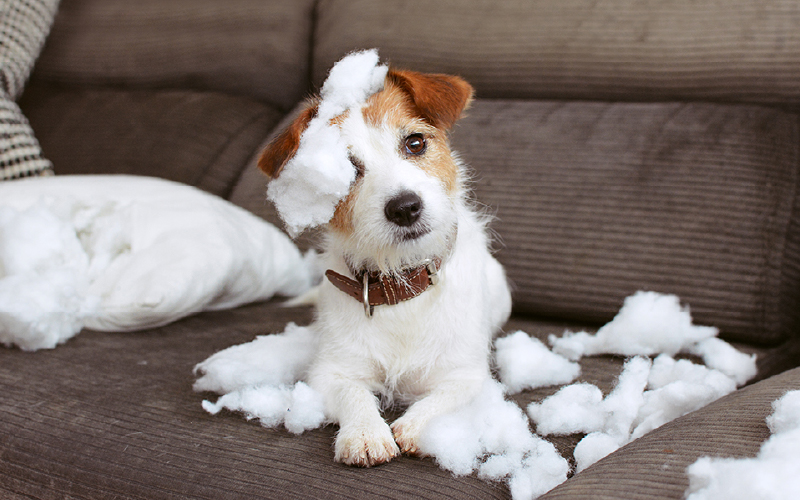
Urinating and Defecating
A house-trained dog that relieves itself inside the house or kennel while its handler is gone is expressing a symptom of separation anxiety. Sometimes this behavior is accompanied by coprophagia, or the consumption of excrement, which makes it hard for the symptom to be identified.
If your dog is not yet housetrained, then accidents inside that house while you are away are not necessarily linked to anxiety.
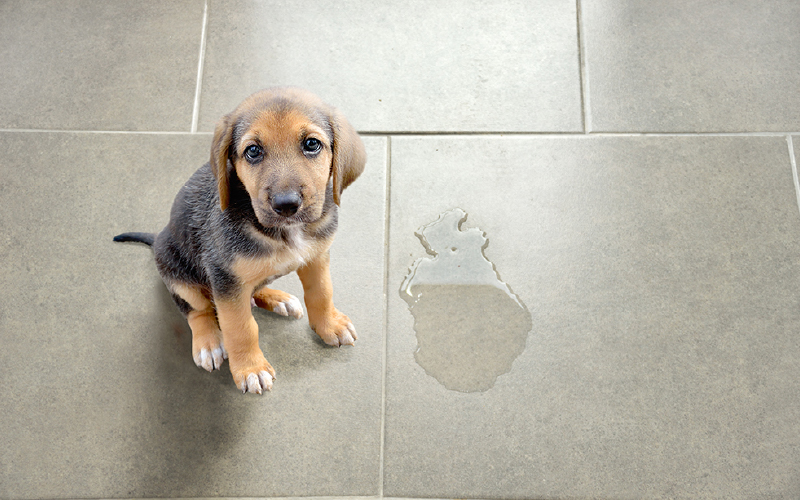
Escaping
Dogs with separation anxiety immediately start looking for a way out once their handler leaves them alone. This includes escaping confinement from a room or kennel or attempting to dig through doors or windows. Escape attempts can lead to injuries caused by splintered wood or broken glass, with the potential for scraped paw pads and damaged nails.
If your dog damages the house in his or her escape attempts, crating is not a good solution as he or she will simply damage themselves trying to escape the crate.
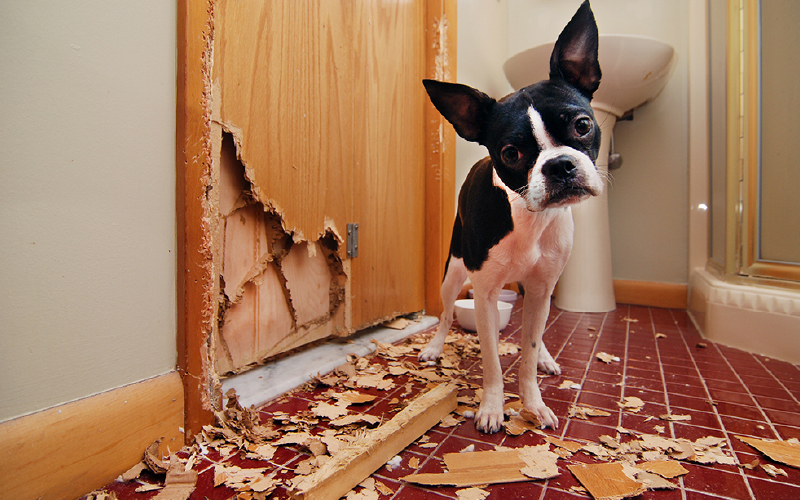
Restlessness and Pacing
Walking in circles, pacing, and restless behavior are common symptoms of separation anxiety. Dogs experiencing anxiety cannot relax and will wander their place of confinement restlessly until their guardian returns.
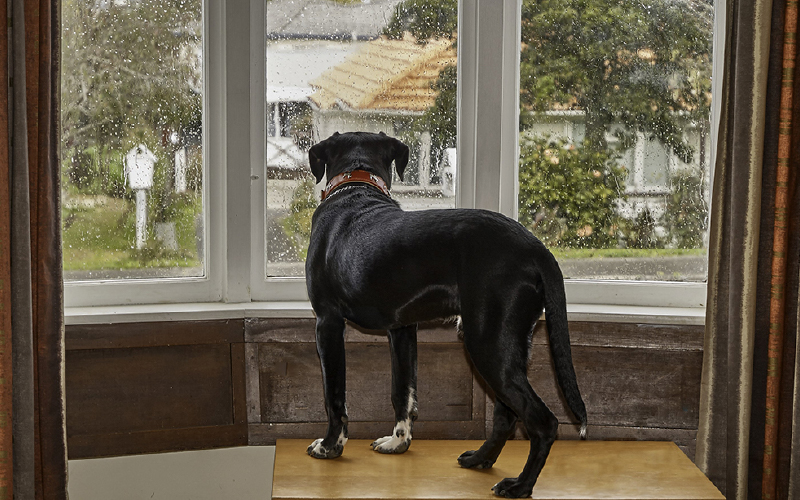
How can we fix it?
Depending on the severity of your dog’s separation anxiety, there are various treatment options to help your dog feel safe and secure when they’re home alone. In addressing separation anxiety, it is important to remember that the behavior is normally a panic response. To find a solution, you must root out the underlying cause!
Minor Separation Anxiety
For minor separation anxiety, there are a few easy lifestyle changes that will help your dog. Dogs are sensitive to their owner’s emotions, and when we make a big deal over events or behavior, they associate our energy with that event. Try to make your arrivals and departures to and from your home a quiet, calm affair. When returning home, ignore their initial enthusiasm until they calm down. Then, once they’ve settled down, pet them!
Consider leaving clothes from a dirty pile of laundry to keep your dog company. It may not seem like much, but a shirt that smells like you can be a calming companion for a nervous dog, especially if they’re not used to being alone.
Alternatively, give them a fun toy to occupy their time and help them release their nervous energy.
Severe Anxiety
In more severe cases, it’s important to address the situation to keep your dog safe. Consider confining your dog loosely, ideally in a secure room that has some toys, a treat or two, and something that smells like you. Make sure your dog understands that the room is a safe space and not a place for punishment.
If separation anxiety is severe and unmanageable, a professional dog trainer can help address the behavior.
With desensitization techniques and positive reinforcement, a dog trainer can quickly remedy separation anxiety. The key is to teach your dog to tolerate isolation calmly. Your trainer will also help you establish a word or action that signals your departure to your dog, commanding them to return to their safe space and wait for you.
Additionally, in-home training can be helpful for not only your dog but also for you. A qualified trainer that understands dog behavior will teach you how to communicate with your dog. This allows you to better address separation anxiety and other problem behaviors. Once you and your dog understand each other, you will both feel secure whether you are in the home or out for the day.
Contact Dog Training Elite in Denver today and schedule an in-home training session so you and your pup can start feeling stress free.
